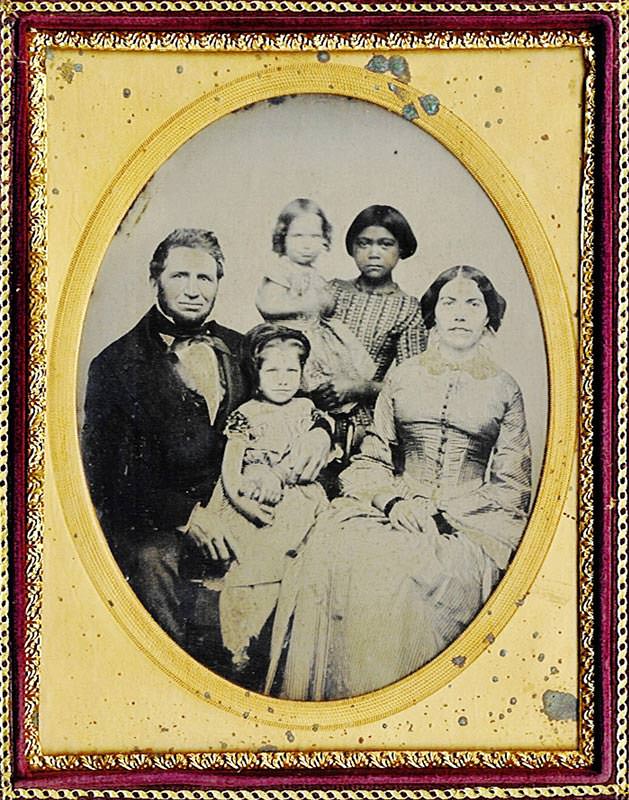
New Episode of ACLU Gold Chains Podcast Examines Indigenous Child Slavery in 19th century California, Connects to Upcoming U.S. Supreme Court Case Brackeen v. Haaland
How the "free" state of California enslaved Native children
SAN FRANCISCO, CA – California came into the Union as a free state in 1850 with a constitution that banned slavery. So how did white settlers in the mid-19th century get away with enslaving Indigenous children, some of them as young as 2 years old? And why does this little known, terrible chapter of California history matter today?
Today, the ACLU of Northern California released the third episode of Gold Chains, our podcast about California’s hidden history of slavery. “Indigenous Injustice” examines a 19th century state law called the Act for the Government and Protection of Indians that effectively legalized Indigenous child slavery and encouraged kidnappers to snatch Native children from their tribal communities.
“The horror of what happened in California, the genocidal violence against Native people, and especially the enactment of that violence against children, is unfathomable,” said historian Stacey Smith, who appears as a guest on the show.
“Indigenous Injustice” isn’t just ancient history. Over time, the practice of forcibly separating Native children from their tribal communities has taken on many forms. There were the so- called Indian Boarding Schools. A variety of other government-sanctioned adoption schemes have funneled Indigenous children into Non-Native, mostly white households.
Currently, there’s a landmark case scheduled to be heard by the U.S. Supreme Court on Nov. 9 – Brackeen v. Haaland – that deals with the very same issue of the forced removal of Native children from their families, tribes and tribal culture. It threatens to dismantle the Indian Child Welfare Act (ICWA), which was passed to prevent Native children from being removed from their communities.
The American Civil Liberties Union, along with 12 ACLU affiliates ( including the ACLU of Northern California) have filed an amicus brief with the U.S. Supreme Court, urging the court to uphold the constitutionality of the Indian Child Welfare Act.
“Indigenous Injustice” is a timely story that connects the dots between Indigenous child slavery in California to the present.
Link to Episode Website
Episode 3:
Indigenous Injustice
California joined the Union as a so-called free state in 1850. So how did white settlers get away with enslaving Native children until they were young adults?
We explore a little-known California state law called the Act
for the Government and Protection of Indians that unleashed genocidal
violence against Indigenous children. And we connect the dots between
that terrible past and a landmark upcoming U.S. Supreme Court case.
Episode Credits:
Produced by the ACLU of Northern California
Host and writer Tammerlin Drummond
Senior Producer and Editor Joanne Jennings
Mix and Original Score Renzo Gorrio
Executive Producer Candice Francis
We’d like to thank our wonderful guides Stacey L Smith, William Bauer and Tedde Simon.
Our associate producers are Lisa P. White and Carmen King.
A special thanks also to our voice actors Pauline Schindler, William Freeman, and Avi Frey.
Elize Manoukian provided fact-checking and production assistance.
Field recording was done by Julie Conquest, Ron George and Eric Gleske.
We’d also like to thank the following members of our Gold Chains team: Brady Hirsch, Gigi Harney and Eliza Wee. Thank you also to Abdi Soltani, executive director of the ACLU of Northern California.
A special thanks to World Affairs, Oregon State University and the University of Nevada, Las Vegas for providing us with recording studios.
Archival sound was provided courtesy of Periscope Films and Prelinger Archives.
Episode Guests:
William Bauer is a professor of history at the University of Nevada, Las Vegas and a citizen of the Round Valley Reservation. He is the author of California Through Native Eyes: Reclaiming History and We Were All Like Migrant Workers Here: Work, Community and Memory on California’s Round Valley Reservation.
Stacey Smith is an associate history professor at Oregon State University. She is the author of Freedom's Frontier: California and the Struggle over Unfree Labor, Emancipation and Reconstruction.
Tedde Simon is the Indigenous justice advocate at the ACLU of Northern California and a citizen of the Navajo Nation.
Additional Resources:
Gold Chains: The Hidden History of Slavery in California, ACLU of Northern California
Among the Diggers of 30 Years Ago, Helen M. Carpenter
Early California Laws and Polices Related to California Indians Kimberly Johnston-Dodds, California State Library
Federal Indian Boarding School Investigative Report U.S. Department of Indian Affairs
This Land, host Rebecca Nagle
At Liberty, host Kendall Ciesemier























No comments:
Post a Comment
Please: Share your reaction, your thoughts, and your opinions. Be passionate, be unapologetic. Offensive remarks will not be published. We are getting more and more spam. Comments will be monitored.
Use the comment form at the bottom of this website which is private and sent direct to Trace.